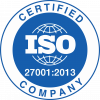A letter of recommendation is a powerful tool that can make all the difference in selecting the right employee in today’s competitive world of work, where every tool counts when it comes to choosing the best talent for your company.
During recruitment or selection processes, a letter of recommendation is often requested as a form of “endorsement”, to obtain references to support what is described in the candidate’s CV. Normally, candidates present a letter of recommendation as support for the skills described and their previous work experience.
For this reason, all HR departments should be familiar with the format, not only to process it properly when interviewing new candidates but also to word it appropriately when a former employee requests it.

What is a letter of recommendation?
A letter of recommendation, also called a reference letter, is a document that is usually presented as a complement to the CV of a candidate applying for a role within the company and is intended to support the candidate’s skills or potential to perform the job. In some cases, a letter of recommendation is one of the requirements to apply for a job offer; in others, the candidate adds it voluntarily to support their candidacy and increase their credibility.
Therefore, the document’s content is usually positive, highlighting and praising certain characteristics, knowledge, or attitudes of the person, which may be of value for the position to be filled.
A letter of recommendation is usually written by someone who knows the candidate’s skills, achievements, and professional characteristics, such as a former employer, supervisor, colleague, or mentor, who can attest to the candidate’s performance and worth. Although it is not required to be written, many companies offer it during the exit interview with the candidate, intending to end the employment relationship positively with the former employee.
Of course, the letter of recommendation by itself is not a guarantee that the candidate will get the job, but it is a useful tool capable of lending substance to the interview and credibility to the candidate’s professional experience.

Key elements in a letter of recommendation
The best way to write a letter of recommendation is to include the information in a well-organised way and to highlight the most important aspects of the employment relationship with the person. But what are these important elements? Read on to find out.
- Letterhead: Start by indicating the name of the employer and the company, its position and contact methods, the relationship with the candidate, and the date of issue of the document.
- Title and heading: This section includes the title that gives the document its name and the information about who we want to address. It also includes a formal salutation to introduce the purpose of the letter.
- Basic employee data: Such as the candidate’s name duration of the employment relationship (exact dates from beginning to end).
- Description of the position held: This section describes the employee’s tasks, both the main and secondary activities, and their major achievements or goals reached.
- Other skills: This area can highlight specific skills of the candidate, such as soft skills, hard skills, work ethic, social behaviour, or include examples of their performance and skills.
- Educational background: If available, you can also include a list of the employee’s training in the company, and how it has evolved since then.
- Statement of recommendation for the candidate: In this section, you specify briefly, but directly, the reason why you trust and recommend this employee for future projects.
- Closing and sign-off: To conclude, the person who writes the letter briefly closes it, leaving their contact details so that they can clarify any doubts regarding what has been written and signing it to finalise the letter of recommendation.
What is the usefulness of a letter of recommendation?
When we think about taking care of employees’ mental well-being at work, we must consider all stages of the employee’s life cycle, including the final one. Therefore, writing a good job recommendation letter for one of your team members can be one final act that can support your staff in their professional development.
Although not mandatory, writing a job recommendation letter can help one of your employees join another company. This, in turn, brings benefits to the company, such as improving its reputation, increasing levels of job satisfaction, and enhancing the employee experience.

Tips on how to write a good letter of recommendation
Just knowing the structure of a job recommendation letter does not guarantee that you will write it in the best possible way. For this reason, we provide some practical tips that will make the process easier.
- Be clear and concise: when writing the letter, avoid rambling and be as clear as possible so that the person receiving the letter can quickly understand all the relevant information and why the employee is being recommended.
- Don’t forget to include the details of the recommended person: written information is not much use if it does not relate to a specific person. For this reason, be sure to include all the employee’s details to verify the employee’s identity.
- Personalise the letter: Address the letter to a particular person whenever possible. This will add credibility and formality to the document. If you do not know the identity of the person who will receive the letter, you can add “to whom it may concern” as a gesture of cordiality and professionalism.
- Use your CV as a guide: The CV of the person you recommend is useful when writing a job recommendation letter. Use it as a reference, and highlight the qualities and skills emphasised to analyse and expand on them in the letter.
- Be data-driven: When writing the letter, have the employee’s performance and information at hand. Analyse the data and write from it to make it easier for you to know what information to highlight.
- Be specific with positive comments: When highlighting a positive quality, be specific about why you think it is relevant to talk about it. Any comment that is too general or not objective will detract from the credibility of the information you want to convey.
- Include personal characteristics: When describing the person, do not forget to mention qualities related to their values, both personal and professional, as the new company will also want to know if the candidate’s values fit with their own company culture.
- Relate the qualities to the activities or tasks: When describing the candidate, make sure to relate the qualities to the activities performed. Explain the challenges they overcame, how, etc. This will help contextualise the skills in the business environment and will help the new boss visualise the candidate in their potential new role.
- Explain why you recommend the person: at the end of the letter, you can add a sentence of recommendation specifying why this person is being recommended. You can refer to their merits or how you think they will thrive in the new position.
- Keep the information up to date: When writing, always mention the date the job recommendation letter was created, and try to keep it as close as possible to the date the letter will be delivered. This demonstrates the timeliness of the information.

Mental well-being as a key HR tool
At ifeel, we know that maintaining positive working relationships is key to having valuable future connections. That’s why a letter of recommendation is an essential tool for large companies to ensure their reputation and to take care of their relationships with their human capital. HR teams should take advantage of this powerful tool!
To support them in this process, ifeel has created a mental well-being programme for companies, designed by its team of expert psychologists, to help companies place their employees’ psychological well-being at the heart of their corporate culture.
Thanks to this collaboration, the people at the head of human resources departments can receive personalised, data-driven advice on how to get the most out of their teams and take better care of the psychological well-being of the people in them. Try our programme now to see how it could help you.
We hope you found this post on how to write a good letter of recommendation interesting, and we encourage you to plan your career goals for the coming year with the help of our blog. If you would like more information about our mental well-being solution for companies, simply request it, and we will contact your team as soon as possible.









